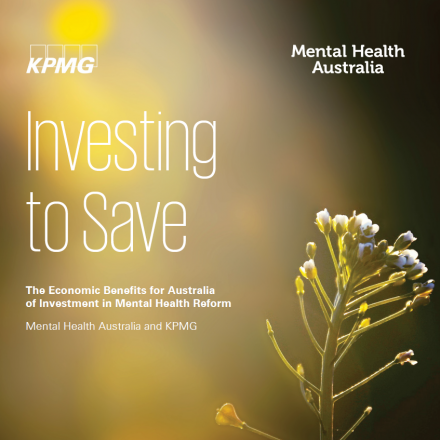CEO Update - Let's get serious about funding co-design
Today I spent the morning in Melbourne with the National Mental Health Consumer and Carer Forum.
The Forum brings together consumer and carer representatives from every state and territory, and consumer and carer representatives from a number of national consumer and carer organisations and groups.
It is a twice-annual meeting, and I am always enriched by the exchange. I had an opportunity to hear the priorities of the group first hand, and give an account of Mental Health Australia’s observations and priorities for the immediate future.
It appears to me that the consumer and carer movements currently face challenges on many fronts.
For instance, the National Mental Health Consumer and Carer Forum is only funded to meet face-to-face twice a year. That puts a lot of pressure on the group to make the most of their limited opportunities to achieve influence, in an environment where expectations are very high. There is so much to do, and the burden falls to so few.
In addition, the National Mental Health Consumer and Carer Forum has not received any increase in funding for 10 years! In this time, the Forum’s operational funding has only increased in line with inflation, despite steadily increasing demand for their participation and engagement in national mental health reform.
Even further, the funding the group receives is a paltry sum – the annual Commonwealth contribution to the group is less than what the Commonwealth spent on a 30 second TV commercial during last year’s Grand Final. And they are being asked to ‘co-design’ a mental health system that sees the Commonwealth Government spend in the order of $10 billion annually. The miss-match is obvious.
If the structures and processes that underpinned a group like the Forum were stronger, some of these barriers could be mitigated – but they are not. Groups that feed into the Forum’s deliberations at state and territory, and national level are similarly underfunded, or worse non-existent! For instance, there is still no national peak body for consumers. Two years after recommending action there is still no systematic representation of CALD populations. Groups representing carers, LGBTIQ+ communities, Indigenous populations and others are all underfunded and overstretched.
Confounding these challenges, I also observe that there is a generational change occurring in consumer and carer representation. The origins of large sections of these movements grew out of the fierce advocacy that overturned traditional institutional care. The consumer movement in particular was active in triggering the deinstitutionalisation of much of the mental health system. While we can still discuss whether this process is complete, and whether all the community supports required to replace institutions have ever been properly established, it leaves a consumer movement today that has not been exposed to the same level of institutionalisation, and in many cases do not identify as clearly as ‘mental health consumers’.
Some (though not all) would argue that we are all consumers, and that most of us are also carers, as all of us will experience mental health issues in ourselves or in others at some stage in our life time.
All of this is really just a long way of saying that if we are serious about co-design we need to get serious about funding and supporting consumer and carer representation. We made this case in our pre-Budget submission. We need to keep making the case until the resources provided for consumers and carers to represent their views, match the scale of the task they are asked to undertake.
Warm regards
Frank Quinlan
Chief Executive Officer




